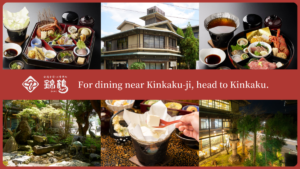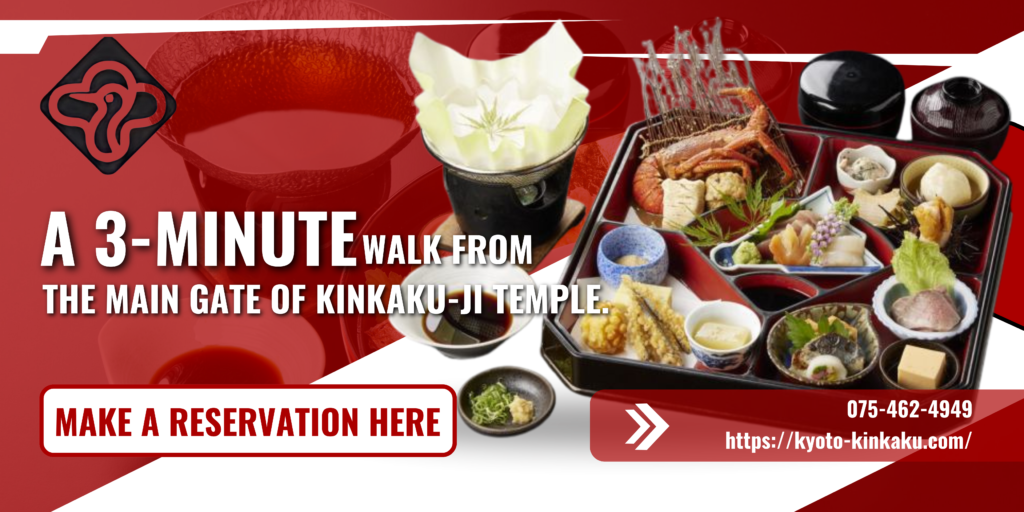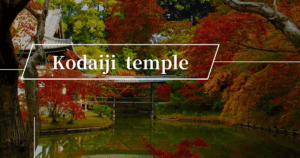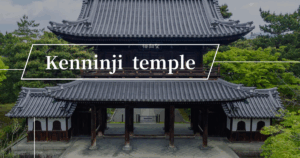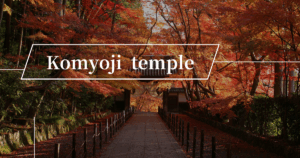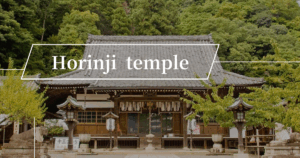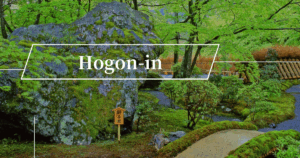Byodoin Temple is a miraculous structure that combines the architectural beauty of the late Heian period with Japanese aesthetic sense.
The Phoenix Hall, which still shines brightly after 1000 years, is even featured on the 10 yen coin and continues to fascinate many people.
This temple, located on the banks of the Uji River, has been the object of people’s admiration since ancient times as a space that recreates the Pure Land on earth.
It continues to attract visitors from all over the world, who come to experience its grandeur and beauty.
In this article, we will look at Byodo-in Temple’s history, highlights, and access.
What kind of place is Byodoin Temple?
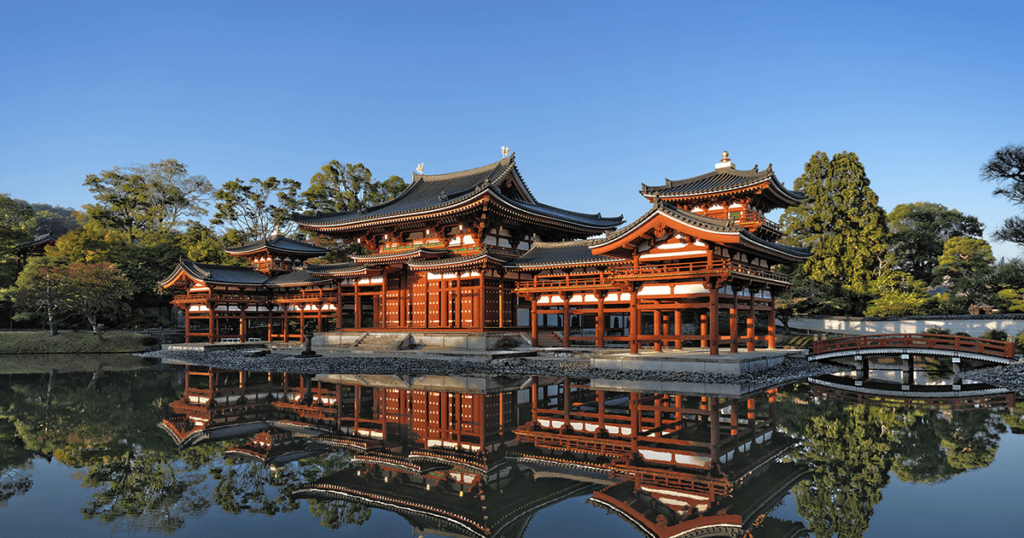
Byodo-in Temple, located in Uji, Kyoto Prefecture, is one of Japan’s most representative temples from the late Heian period.
Founded in 1052 by Fujiwara no Yorimichi, its central Phoenix Hall is a designated National Treasure and World Heritage Site .
The temple enshrines a seated statue of Amida Nyorai as its principal image and is characterized by its architectural style which represents the Pure Land on earth.
The Phoenix Hall, which has a pond in front of it, expresses the world of paradise, including its reflection on the water’s surface, and its unique shape, which looks like wings spread out on all four sides, is why it came to be called the “Phoenix Hall.”
The interior of the hall is decorated with 52 statues of the Bodhisattva Clouds, which, together with the vividly colored murals, represent the pinnacle of Buddhist art from the Heian period.
Byodo-in Temple is so beloved by Japanese people that it is featured on the design of the 10 yen coin, and it has become an important cultural symbol of Kyoto, visited by many tourists and pilgrims every year.
History of Byodo-in Temple
As a temple with a thousand years of history, Byodo-in occupies an important place in Japanese architectural history and Buddhist culture.
Let’s trace the path that this temple has taken alongside Japanese history, from its founding in the Heian period to the present day.
From Fujiwara’s villa to Buddhist temple
The origins of Byodo-in Temple date back to Fujiwara no Michinaga’s villa, Ujidono.
After his father’s death, his son, Fujiwara no Yorimichi, enshrined the Amida Buddha there in 1052 and developed the temple into one.
At that time, aristocrats fervently hoped to go to paradise after death, and Yorimichi sought to recreate the Pure Land on earth by worshiping Amida Buddha .
The following year, in 1053, the current Phoenix Hall was built and served as the entrance to the Pure Land.
During this period, the idea of the Latter Days of the Law spread among Heian aristocrats, and there was a growing movement to seek salvation after death.
Yorimichi’s construction of Byodo-in Temple was a symbolic event that combined the anxiety of the times with faith.
Disasters and reconstruction after the Kamakura period
Byodoin Temple has suffered many natural disasters.
The area suffered particularly heavy damage during the wars of the Northern and Southern Courts period in 1336, and was also hit by multiple typhoons during the Muromachi period that followed.
It sustained serious damage in the Great Keicho Earthquake of 1596, but was restored with the support of Tokugawa Ieyasu.
During the Edo period, the temple enjoyed a period of stability under the protection of the shogunate, and progress was made with the restoration of the Phoenix Hall and the development of the gardens.
In the Meiji era, it was affected by the anti-Buddhist movement, but its value as a cultural asset was rediscovered and it has continued to be maintained and cared for.
Throughout its history, Byodoin has overcome many crises and continues to maintain its former glory to this day.
World Heritage Site and Modern-Day Byodo-in Temple
The global value of Byodoin Temple was officially recognized in 1994.
It has been registered as a World Heritage Site as part of the “Cultural Assets of Ancient Kyoto” and is now subject to international protection.
Later, around 2000, the Byodoin Museum Hoshokan was opened and developed as a facility to preserve and exhibit the precious Buddhist statues and ornaments inside the Phoenix Hall.
A large-scale restoration of the Phoenix Hall was completed in 2014, restoring it to its original brilliant colors.
It has now become a popular spot visited by approximately 800,000 tourists annually, and plays an important role in promoting Japan’s traditional culture and Buddhist art to the world.
Byodo-in Temple, which continues to shine for more than a thousand years, is highly regarded both in Japan and overseas as a successful example of cultural heritage preservation.
Highlights of Byodo-in Temple
Byodoin Temple is attractive for its majestic space created by the harmony of its architectural beauty, Buddhist art, and gardens.
We will introduce the main highlights of Byodo-in Temple, which has an appeal that has not faded even after a thousand years.
Be sure to check out these points when you visit.
Highlights of Byodo-in Temple
- National Treasure: Phoenix Hall
- Statue of the Bodhisattva offering a memorial service in the clouds and Hoshokan
- View of the Pure Land garden and the Uji River
National Treasure: Phoenix Hall

The Phoenix Hall, the symbol of Byodo-in Temple, is considered the greatest masterpiece of temple architecture from the Heian period.
It got its name from its shape, which resembles wings spread out on both sides with a pond in front.
Another distinctive feature is the phoenix decorations on both ends of the roof.
Inside is a seated statue of Amida Nyorai, said to have been created by Jocho, which expresses the worldview of the Pure Land .
The walls and ceilings inside the hall were once decorated with brilliantly colored murals, but only traces of these remain today.
A large-scale restoration was completed in 2014, restoring the temple to its original vibrant vermilion color.
The Phoenix Hall, which is also featured on the 10 yen coin, is one of the most familiar ancient buildings to Japanese people.
Statue of the Bodhisattva offering a memorial service in the clouds and Hoshokan
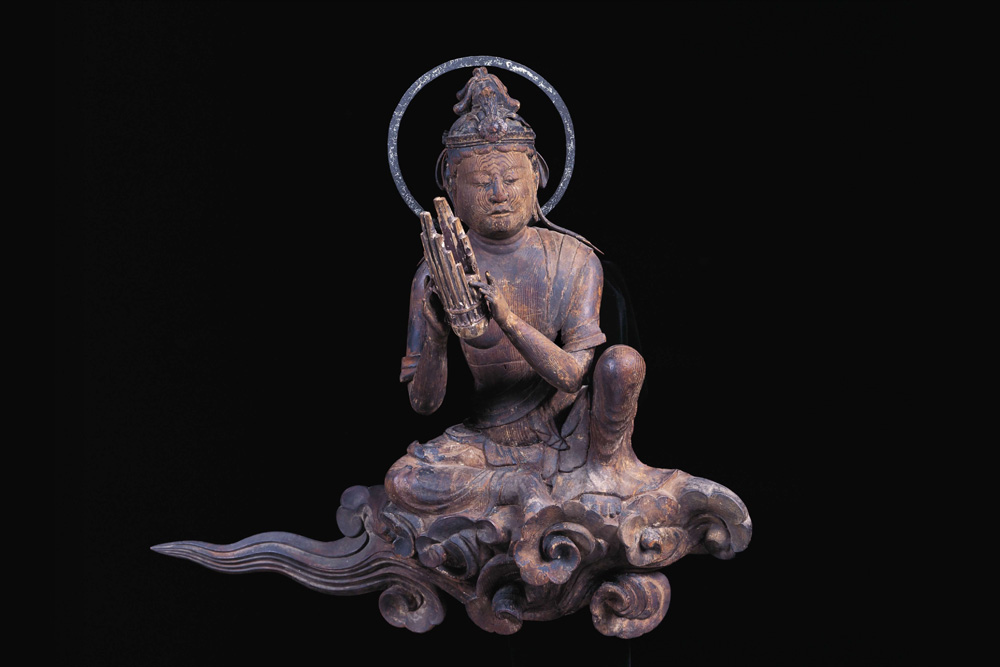
The 52 “Cloud-Covered Bodhisattva Statues” decorating the Phoenix Hall are masterpieces in the history of Japanese sculpture.
These depict bodhisattvas riding on clouds praising Amida Buddha, and each one has a different expression and instrument, creating a three-dimensional world of the Pure Land.
Currently, 26 Bodhisattva statues are on display at the Byodoin Museum Hoshokan along with the principal image of Amida Nyorai.
At Hoshokan, which opened in 2000, you can view these national treasures up close and also learn about the history and cultural background of Byodoin Temple.
In particular, the mother-of-pearl decoration known as “Nissokan Sewari” that shines behind the Amida Buddha statue is a valuable relic that conveys the intricate craft techniques of the Heian period to the present day.
View of the Pure Land garden and the Uji River
The garden of Byodoin Temple is known as a representative example of a Pure Land style garden.
The garden, which spreads out around the central Aji Pond, was designed to represent the Pure Land on earth, and the Phoenix Hall reflected in the pond creates a particularly beautiful sight.
Another highlight is the changing nature of the seasons, with cherry blossoms in the spring, green trees in the summer, autumn leaves in the fall, and snowy scenery in the winter, showing different faces throughout the year.
From the garden you can see the flowing Uji River and enjoy the scenery that blends in with the surrounding natural environment.
Within the temple grounds, there is a temple town called “Byodoin Omotesando,” where you can sample local specialties such as Uji tea and Byodoin’s original “Byodoin yaki.”
What is the best season to visit Byodoin Temple?
Byodoin Temple is a temple where you can enjoy its beauty in all four seasons, but it is especially recommended to visit during the autumn foliage season from mid- to late November.
The scenery created by the vermilion of the Phoenix Hall and the autumn leaves is exceptional, and its reflection in the pond further enhances the worldview of paradise.
The cherry blossom season from early to mid-April is also a popular time, and the contrast between the cherry blossoms in the garden and the Phoenix Hall makes for a beautiful photo spot.
The season of fresh greenery in early June, when there are relatively few tourists, and the quiet winter scenery from late January to February are also recommended times to enjoy the majesty of Byodo-in Temple in a tranquil atmosphere.
Regardless of the season, early morning and evening are the best times to visit, as there are fewer tourists and you can enjoy the view in a more sacred atmosphere.
Access to Byodoin Temple
Byodoin Temple is located in Uji city, a little way from the center of Kyoto city, but it is a tourist spot that is relatively easy to access using public transportation.
Here we will introduce how to get there from major tourist hubs.
Please use this as a reference when incorporating it into your sightseeing route.
Access from Kyoto Station
Byodoin Temple can be reached in about 30 minutes by train from Kyoto Station.
Take the JR Nara Line rapid or local train and get off at Uji Station.
From the station it is about a 10-minute walk to Byodoin Temple.
If you are using the Keihan Railway, take the Karasuma Subway Line from Kyoto Station to Marutamachi Station, then transfer to the Keihan Railway and get off at Uji Station.
It is about a 10-minute walk from the station.
If you take the bus, it is convenient to take the bus from Kyoto Station bound for “Uji Ekimae” or “Byodoin-michi” and get off at the last stop.
The journey takes approximately 45 minutes to an hour.
Access from Kinkakuji Temple
The most common way to get from Kinkakuji to Byodoin is to take a city bus and then a train.
Take city bus number 205 from Kinkakuji Temple and get off at Kyoto Station.
From there, transfer to the JR Nara Line or Keihan Railway to Uji Station.
The journey time, including transfers, is approximately 1 hour and 15 minutes.
If you want to be efficient with your sightseeing, we recommend first touring the northern part of Kyoto city, such as Kinkakuji Temple, Ginkakuji Temple, and Heian Shrine, then heading south to Fushimi Inari Taisha Shrine before heading to Byodoin Temple .
If you take a taxi, it will take about 45 minutes and cost around 7,000 yen.
Byodoin Temple admission fees and opening hours
Below is a table summarizing basic information about Byodoin Temple.
| item | Contents |
|---|---|
| location | 116 Ujirenge, Uji City, Kyoto Prefecture |
| Visiting hours | Temple grounds: 8:30-17:30 (reception closes at 17:00) |
| Closed Days | None (Open all year round) |
| Admission fee | ■ Garden and Phoenix Hall exterior Adults: 600 yen / Junior and senior high school students: 400 yen / Elementary school students: 300 yen ■ Hoshokan (museum) Adults: 300 yen / Junior and senior high school students: 200 yen / Elementary school students: 100 yen ■ Set ticket (Garden and Phoenix Hall exterior + Hoshokan) Adults: 900 yen / Junior and senior high school students: 600 yen / Elementary school students: 400 yen |
| Special viewing | Inside the Phoenix Hall (only during special opening periods) Adults: 300 yen / Junior and senior high school students: 200 yen / Elementary school students: 100 yen |
| parking | Available (charged) |
| Estimated travel time | Garden only: Approximately 30 minutes Garden and Hoshokan included: Approximately 1 hour to 1 hour 30 minutes |
* Group discounts available (for groups of 20 or more)
* Discounts available for those with a disability certificate (including one caregiver)
* Special viewings may not be available depending on the season or restoration work, so please check the official website in advance.
Recommended spots around Byodoin Temple
When visiting Byodo-in Temple, we also recommend touring the historic temples and shrines scattered around the area.
The Uji area is a treasure trove of Buddhist culture dating back to the Heian period, and is dotted with other worthwhile temples besides Byodo-in Temple.
Please enjoy the pilgrimage for a whole day.
Mimurotoji Temple
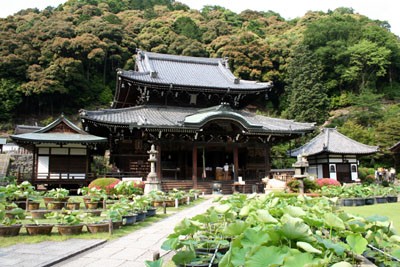
Located about 3km from Byodoin Temple, Mimuroto-ji Temple is an ancient temple founded during the Nara period.
Also known as the “Hydrangea Temple,” the temple is bustling with tourists in June when the roughly 10,000 hydrangeas of about 50 different species planted within the grounds bloom in full glory.
The principal image of the temple, the Eleven-Headed Kannon Bodhisattva, is a secret Buddha image, and is displayed to the public only once every 33 years, attracting many worshippers.
Additionally, approximately 200 cherry trees and 20,000 azaleas bloom in the spring, giving the temple a reputation as a “flower temple.”
The temple grounds offer a panoramic view of the city of Uji, and the magnificent views make it a popular spot for viewing the sights of Kyoto.
It is a healing space where the tranquil atmosphere of the temple and beautiful nature come together in harmony.
Koshoji Temple

Located about a 10-minute walk from Byodoin Temple, Koshoji Temple is an ancient Rinzai sect temple known for its beautiful garden, which is counted among the “Seven Famous Gardens of Uji.”
Founded in the Kamakura period, it is known as Japan’s first pure Zen temple.
Especially in the autumn, when the leaves change color, the tunnel of autumn leaves that stretches from the temple gate is beautiful, and many people visit the temple as a famous spot for viewing autumn leaves in Uji.
The Senshintei garden, a stroll-style pond garden in front of the main hall, is a famous garden that shows different faces throughout the seasons, and is known as the “garden of autumn leaves and moss.”
It is a tranquil space based on the teachings of Zen, and you can also experience zazen.
Located a little away from the hustle and bustle of Byodoin Temple, it is a hidden gem where you can worship at a relatively leisurely pace.
Manpukuji Temple
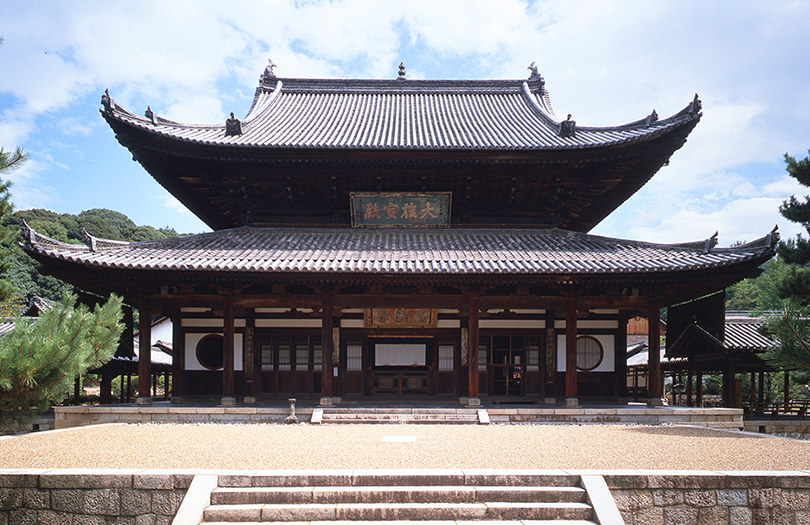
Located about 2km from Byodoin Temple, Manpuku-ji Temple is the head temple of the Obaku sect and was founded by the Chinese monk Ingen Ryuki in the early Edo period.
It features Chinese Ming Dynasty style architecture and has an exotic atmosphere that sets it apart from Japanese temples.
It is a prestigious temple that is counted as one of the “Three Great Zen Temples in Japan,” and its grounds are also known as the birthplace of “fucha ryori” (a traditional Japanese cuisine dish) that is said to have been brought over from China by the Zen master Ingen .
The “treasure house” inside the temple houses belongings belonging to Zen Master Ingen as well as other valuable cultural assets, making the temple also highly valued in terms of art history.
This is one of Uji’s most representative temples, where you can experience the unique temple architecture and Buddhist art that combines Japanese and Chinese cultures.
Frequently asked questions about Byodoin Temple
summary
Byodoin Temple is a valuable cultural heritage that has conveyed Japanese beauty and faith to the present day for over a thousand years.
The Phoenix Hall, built by Fujiwara no Yorimichi, is a masterpiece of architectural beauty that represents the Pure Land on earth, and is highly regarded as a National Treasure and a World Heritage Site.
The scenery that blends in with the natural scenery of the four seasons, the intricate Buddhist art, and the pilgrimage routes to the surrounding temples and shrines leave a deep impression on all who visit.
If you visit Uji, be sure to take the time to enjoy the charms of Byodo-in Temple and have a valuable experience experiencing traditional Japanese culture.
Byodoin Temple is not just a tourist spot, it is a sacred place that embodies our spiritual culture and aesthetic sense.
